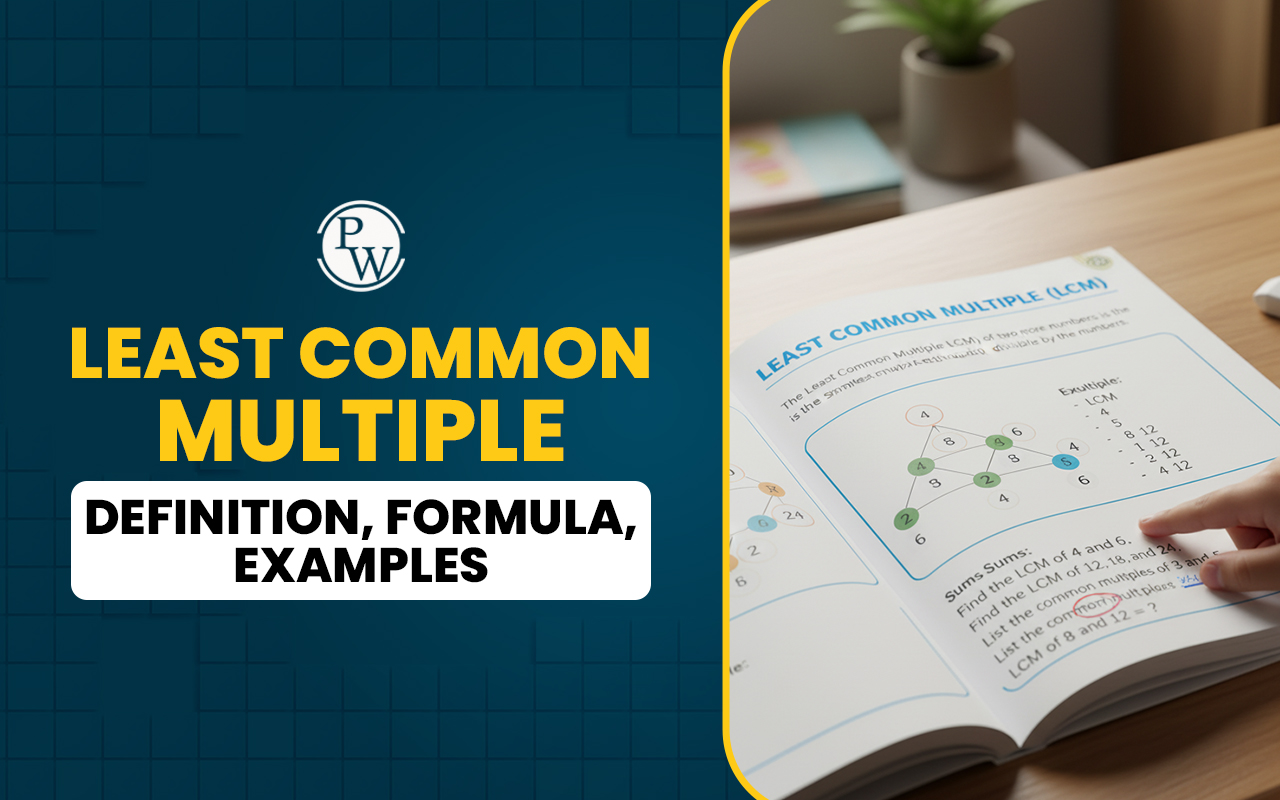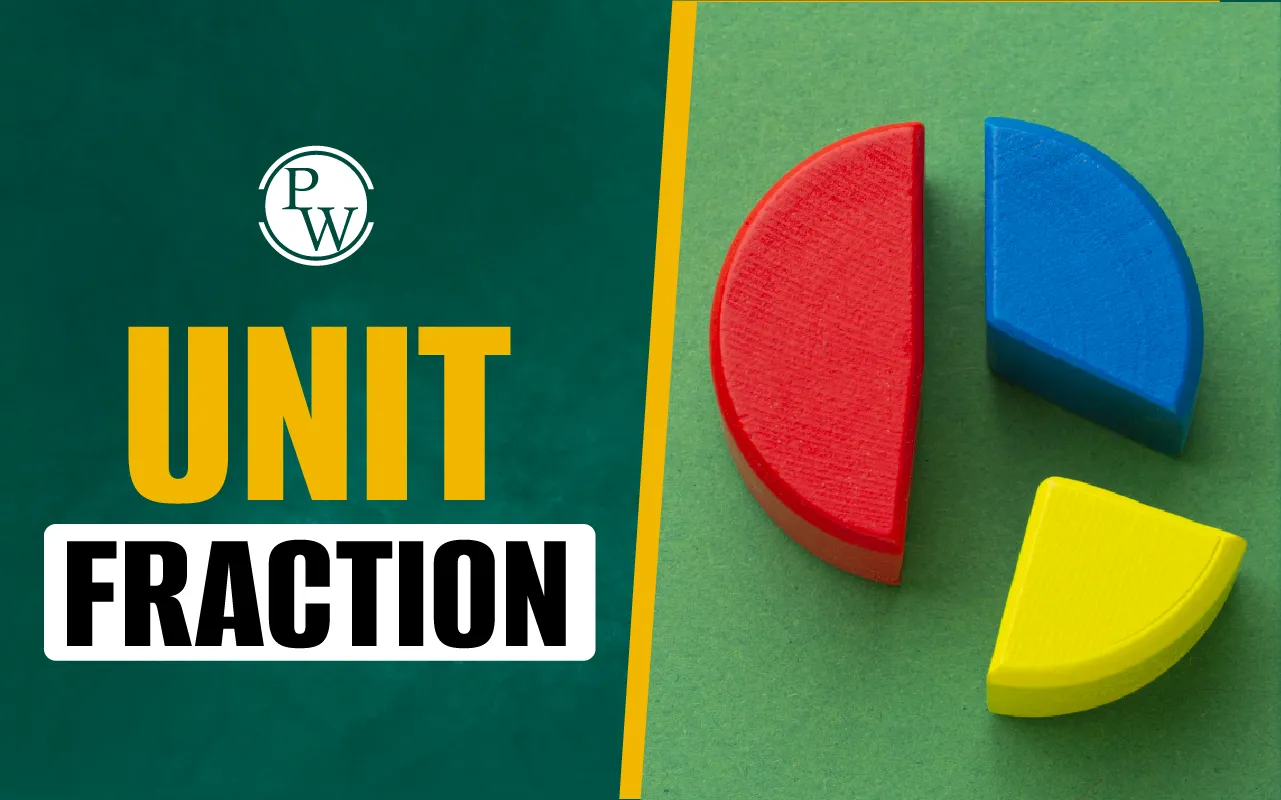
Division is one of the basic operations in mathematics, used to split a total into equal parts or groups. It helps us work out how many items go in each group, or how many groups can be made from the total. Division is closely linked to multiplication, and understanding it is important for solving many types of maths problems. Here, we discuss the concept of division in detail with examples.
What is Division?
Division is one of the four fundamental operations in arithmetic, along with addition, subtraction, and multiplication. It is about splitting a quantity into equal parts or finding how many times one number fits into another.
For example, if a teacher has 24 pencils and wants to give each student the same number of pencils, and there are 6 students, then each student will receive 4 pencils. This is written as 24 divided by 6 equals 4.
Division Definition
Division can be defined as dividing a number, known as the dividend, into equal parts. It is the inverse operation of multiplication. While multiplication combines equal groups, division separates them.
Mathematically, if a × b = c, then c ÷ b = a and c ÷ a = b. This relationship helps us understand the close connection between multiplication and division.
Let us take a simple example. If 4 × 3 = 12, then 12 ÷ 3 = 4 and 12 ÷ 4 = 3. This means division reverses the multiplication process.
Division Symbol
In mathematics, division can be represented using different symbols. The two most common are:
-
The obelus ( ÷)
-
The forward slash (/)
For example, 20 divided by 5 can be written as:
20 ÷ 5 = 4 or 20 / 5 = 4
In more advanced math, division is also expressed using a fraction bar. This looks like a number written over another, such as 8⁄2 = 4.
Read More: How to Do Long Division
Parts of Division
There are four main parts of division. Let’s understand each of them in brief:
The dividend is the number being divided. It is the total amount you start with.
The divisor is the number used to divide the dividend. It represents either the number of groups to form or the number of items in each group.
The quotient is the result of the division. It shows how many complete groups are formed or how many items each group contains.
The remainder is the number left over when the dividend cannot be completely divided by the divisor
Example: Suppose you want to divide 17 by 5.
-
Dividend = 17
-
Divisor = 5
Now, ask yourself how many times 5 fits into 17 without going over. The answer is 3, because 5 × 3 = 15. That means:
-
Quotient = 3
-
Remainder = 2, because 17 minus 15 equals 2
So we can write this as:
17 = (5 × 3) + 2
Read More: Division Questions for Class 4
Steps to Solve Long Division
Let’s go through an example to understand how long division works. We will learn the steps to divide 432 by 4
Step 1: Set Up the Problem
Write the long division setup. Place 432 under the long division bracket (this is the dividend) and place 4 outside the bracket on the left (this is the divisor).
So it looks like this:
4 ⟌ 432
Step 2: Divide the First Digit
Start with the first digit of the dividend, which is 4. Ask yourself: How many times does 4 go into 4?
The answer is 1, because 4 × 1 = 4. Write 1 above the line, right over the digit 4.
Now subtract 4 from 4. You get 0.
Step 3: Bring Down the Next Digit
Now bring down the next digit in the dividend, which is 3.
Ask: How many times does 4 go into 3? The answer is 0, because 4 is greater than 3.
Write 0 above the 3, in the quotient.
Since 4 does not go into 3, you subtract nothing and leave the remainder as 3.
Step 4: Bring Down the Last Digit
Bring down the last digit of the dividend, 2, so the number becomes 32. Ask: How many times does 4 go into 32?
Ask: How many times does 4 go into 32?
The answer is 8, because 4 × 8 = 32.
Write 8 above the line, next to the other digits in the quotient. Now subtract 32 from 32. The result is 0.
There are no more digits left to bring down, and the remainder is zero. This means the division is complete. The final quotient is 108
So, 432 ÷ 4 = 108
Division with Remainders
Not every division problem results in a neat whole number. In many cases, when you divide one number by another, there is something left over that cannot be evenly divided. This leftover amount is called the remainder.
A remainder occurs when the dividend is not a multiple of the divisor. In such situations, the division is not exact, and we say that it is a division with remainders.
Let us take a simple example.
Suppose you want to divide 10 by 3. First, you ask how many times 3 can go into 10 without going over.
-
3 goes into 10 three times because 3 multiplied by 3 equals 9
-
After using up 9, there is 1 left over because 10 minus 9 equals 1
This leftover amount is the remainder. So we write the result like this:
10 ÷ 3 = 3 R1
Here:
-
The quotient is 3
-
The remainder is 1
Dividing Fractions
Dividing fractions may seem tricky at first, but there is a simple rule that makes the process much easier. This rule is often remembered as keep, change, flip.
Here’s what that means:
-
Keep the first fraction exactly as it is
-
Change the division sign to a multiplication sign
-
Flip the second fraction (use its reciprocal)
By following these three steps, dividing fractions becomes as easy as multiplying them.
Example 1: (3/4) ÷ (1/2)
Let’s follow the rules step by step.
Step 1: Keep the first fraction → 3/4
Step 2: Change the division sign to multiplication
Step 3: Flip the second fraction → 1/2 becomes 2/1
Now multiply: (3/4) × (2/1) = 6/4
You can simplify 6/4 by dividing both the numerator and denominator by 2:
6 ÷ 2 = 3, and 4 ÷ 2 = 2, so
6/4 = 3/2 = 1.5
So, (3/4) ÷ (1/2) = 1.5
Example 2: Whole Number Divided by a Fraction
What happens when we divide a whole number by a fraction? Let’s try:
2 ÷ (1/3)
Write the whole number as a fraction i.e. 2 = 2/1
Now apply the steps:
-
Keep 2/1
-
Change ÷ to ×
-
Flip 1/3 to 3/1
Now multiply, (2/1) × (3/1) = 6/1 = 6
So, 2 ÷ (1/3) = 6
This tells us that if you have 2 wholes and divide them into parts that are each one-third in size, you will have 6 parts.
Example 4: Fraction Divided by a Whole Number
Let’s try dividing a fraction by a whole number:
(3/5) ÷ 2
Again, write the whole number as a fraction i.e. 2 = 2/1
Now apply the rule:
-
Keep 3/5
-
Change ÷ to ×
-
Flip 2/1 to 1/2
Now multiply: (3/5) × (1/2) = 3/10
So, (3/5) ÷ 2 = 3/10
This means when you divide three-fifths into two equal parts, each part is three-tenths.
Note: The reason we flip the second fraction is because dividing by a number is the same as multiplying by its reciprocal. The reciprocal of a fraction is simply the fraction flipped. For example, the reciprocal of 2/3 is 3/2, and the reciprocal of 5 is 1/5.
Properties of Division
Division properties are basic rules that help us solve division problems correctly and understand how division works.
Division by 1
When you divide any number by 1, the result is the number itself. This is because you are not splitting it into smaller parts; you are simply keeping the whole amount.
Example: 15 ÷ 1 = 15
Division by the Same Number
Any number divided by itself is always equal to 1. This means you are creating just one group out of the total.
Example: 20 ÷ 20 = 1
Division of Zero
Zero divided by any non-zero number is always zero. If you start with nothing and divide it into parts, each part still has nothing.
Example: 0 ÷ 6 = 0
Division by Zero
Dividing any number by zero is not allowed in mathematics. The result is undefined because no number of groups with size zero can ever give a positive number.
Example: 5 divided by 0 has no answer
5 ÷ 0 is undefined
Division is Not Commutative
Unlike addition and multiplication, changing the order in division affects the result. This means that dividing in reverse order does not give the same answer.
Example: 8 divided by 2 equals 4
8 ÷ 2 = 4
But if you reverse the order:
2 divided by 8 equals 0.25
2 ÷ 8 = 0.25
Since 4 and 0.25 are not the same, this shows that division is not commutative.
Read More: Multiplication Tables
Common Mistakes in Division
Many students make small mistakes while learning division. Being aware of these can help you avoid them.
Mixing up the numbers: The dividend is the number being divided and it comes first. The divisor is the number you divide by and it comes second.
Forgetting the remainder: After dividing, always check if anything is left over and include it in your answer if needed.
Putting the answer in the wrong place: In long division, write each digit of the quotient in the correct column to keep the calculation accurate.
Mistakes in dividing fractions:,When dividing fractions, remember to keep the first fraction as it is, change the division sign to multiplication, and flip the second fraction.
The best way to avoid mistakes in division is through regular practice and review. Always check your answers using the division algorithm:
Dividend = (Divisor × Quotient) + Remainder
Also Read: Math Word Problems: Addition, Subtraction, Multiplication, Division
Help Your Child Excel in Maths with CuriousJr’s Online Tuition
At CuriousJr, we understand that maths can sometimes feel overwhelming for children. When concepts seem too difficult, it’s easy for interest to fade and confidence to drop. Our online maths tuition is built to make learning clear, engaging, and encouraging from the very beginning.
Many parents tell us that their child struggles to keep up in class or feels hesitant to ask questions. We believe every student deserves personal attention and the chance to learn at their own pace. Our teaching approach focuses on breaking down complex topics into clear, easy-to-understand steps using interactive methods and real-life examples.
What makes our classes different is the way we teach. With our two-teacher model, one teacher leads the lesson while the second teacher is there to support students by solving doubts in real time. This allows your child to stay focused and feel confident while learning.
We also offer:
-
Homework help to support learning beyond the classroom
-
Daily progress updates to help you stay connected with your child’s journey
-
Simple maths tricks to make problem-solving faster and easier
-
Practice sessions that build confidence through step-by-step problem solving
-
Extra worksheets to support continued learning at home
Book a demo today to know more about our online classes.
Division FAQs
What is division in math?
Is long division suitable for smaller numbers?
How are fractions divided?
Is it possible to divide by zero?










